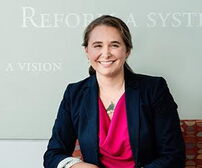Processing Your Payment
Please do not leave this page until complete. This can take a few moments.
- News
-
Editions
-
- Lists
-
Viewpoints
-
Our Events
-
Event Info
- Women's Leadership Forum 2025
- On the Road with Mainebiz in Bethel
- Health Care Forum 2025
- On The Road with Mainebiz in Greenville
- On The Road with Mainebiz in Waterville
- Small Business Forum 2025
- Outstanding Women in Business Reception 2025
- On The Road with Mainebiz in Bath
- 60 Ideas in 60 Minutes Portland 2025
- 40 Under 40 Awards Reception 2025
- On The Road with Mainebiz in Lewiston / Auburn
- 60 Ideas in 60 Minutes Bangor 2025
Award Honorees
- 2025 Business Leaders of the Year
- 2024 Women to Watch Honorees
- 2024 Business Leaders of the Year
- 2023 NextUp: 40 Under 40 Honorees
- 2023 Women to Watch Honorees
- 2023 Business Leaders of the Year
- 2022 NextUp: 40 Under 40 Honorees
- 2022 Women to Watch Honorees
- 2022 Business Leaders of the Year
-
-
Calendar
-
Biz Marketplace
- News
- Editions
- Lists
- Viewpoints
-
Our Events
Event Info
- View all Events
- Women's Leadership Forum 2025
- On the Road with Mainebiz in Bethel
- Health Care Forum 2025
- On The Road with Mainebiz in Greenville
- On The Road with Mainebiz in Waterville
- + More
Award Honorees
- 2025 Business Leaders of the Year
- 2024 Women to Watch Honorees
- 2024 Business Leaders of the Year
- 2023 NextUp: 40 Under 40 Honorees
- 2023 Women to Watch Honorees
- 2023 Business Leaders of the Year
- + More
- 2022 NextUp: 40 Under 40 Honorees
- 2022 Women to Watch Honorees
- 2022 Business Leaders of the Year
- Nomination Forms
- Calendar
- Biz Marketplace
Good Shepherd launches $250M campaign to end hunger in Maine
 Photo / Tim Greenway
Kristen Miale, president of Auburn-based Good Shepherd Food Bank, announced a $250 million campaign to end hunger in Maine by 2025.
Photo / Tim Greenway
Kristen Miale, president of Auburn-based Good Shepherd Food Bank, announced a $250 million campaign to end hunger in Maine by 2025.
Good Shepherd Food Bank has launched a $250 million campaign to end hunger in Maine by 2025, the Auburn-based organization announced Thursday morning, one of the largest non-college fundraising campaigns ever in the state.
The campaign is a "bold effort to build a movement" that will make sure all Mainers have access to nutritious meals when and where they need them, a crisis that the food bank and its more than 500 partner organizations were just getting a handle on when the pandemic hit, Kristen Miale, president of Good Shepherd, said in a video news conference Thursday morning.
Through the Campaign to End Hunger in Maine, the food bank aims to raise $100 million in cash and pledges and $150 million in donated food before the end of 2025. Miale said that it's not only one of the largest-ever non-college campaigns in Maine, but is also believed to be the first of this size and scope by a food bank in the national Feeding America network.
The campaign has raised $115 million to date, after a soft launch that began two years ago. Hannaford Supermarkets, the top donor and a founder of the food bank four decades ago, projects it will contribute $120 million in food and money through 2025. Philanthropist MacKenzie Scott has donated $25 million, one of 348 donations Scott made this year.
More than just raising money, the organization hopes to start a movement that ensures every Mainer has access to nutritious food when and where they need it, eradicating the state's chronic food insecurity crisis.
The biggest measure of tackling hunger is meal distribution, Miale said. The organization and its partners are on track to distribute 32.5 million meals this fiscal year. "Yet this appears to be only 75% of the 40 million meals that are needed," she said.
The campaign aims not only to meet the 40 million meal mark this year, but also invest in strategies that will reduce the need over time, she added. Part of that will be immediate direct grants to the pantry's partner organizations. The campaign priorities also include new partnerships and innovative capacity-building models for food partnerships, advocating for public policy. Across all of the strategies, a priority will be supporting equity for people of color, who are disproportionately affected by food insecurity.
“Hunger is part of a much larger systemic problem and is intertwined with the complex issue of poverty,” Miale said. “And we are confident that when every neighbor has access to the nutritious and culturally relevant food they need, we will stabilize the lives of Mainers facing hunger, reduce the costly impacts of hunger in our state, and make Maine a stronger, more resilient place to work and live.”
She said those goals are "within our reach." The food bank has grown from 10 million meals in 2010 to $27.5 million in its last fiscal year.
Gaining ground until pandemic
Before the pandemic, Maine had the 12th-worst food insecurity rate in the nation, with 180,000 Mainers relying on Good Shepherd and its statewide network of partners. Now, that number is approaching 215,000, including at least 60,000 children.
Miale said that the "devastating impact" of the pandemic has caused hunger in Maine to rise by 25%, to levels not seen since the Great Recession a decade ago.
"The COVID-19 pandemic has placed a microscope on the impact of hunger in the state, as well as the resilience of the food pantry's partners "and on the willingness of Mainers to reach out and help their neighbors,” Miale said.
“With a renewed public awareness about the prevalence of hunger, now is the time to build a movement and end hunger in our great state. The pandemic will someday fade away, but its impacts on hunger won’t unless we take action now," she added.
Fundraising already underway
The "quiet phase" of the campaign, which began 2019, has raised $115 million in food and money to date. "We have been overwhelmed by support by so many" during that phase, Miale said. The campaign's roots are in its 2015 comprehensive plan. Part of that was the distribution warehouse built in Hampden in 2019, to make distribution easier to farther-flung areas of the state. Since then, all donations, from 43,000 different sources, have gone to the new campaign.
Miale said that last year at this time, there was reason for optimism about ending hunger in Maine. "While still significant, the rates of hunger were the lowest Maine had seen since the great recession," she said at the news conference. She said through partnerships with food pantries, schools, health care systems and more, the food bank had grown its distribution more than 160% in the last decade.
"The pandemic will someday fade away, but it's impact won't unless we take action now," she said.
Mike Vail, president of Scarborough-based Hannaford, said that in the 40 years since the chain helped JoAnn PIke found the food bank, the company has never seen need like there is now.
“As an employer with stores throughout Maine, we have seen first-hand the negative impact hunger has on individuals and our state. From education and workforce development to health care and families’ ability to make ends meet, hunger affects every major challenge Maine faces. Let’s not let another generation pass us by. Let’s end hunger now.”
Mainebiz web partners
Related Content
I volunteer at GSFB and it is in a league of its own in efficiency and professionalism. GSFB provides vital support for an essential cause, and because it's so well-run, donors should know that every dollar it raises will be used highly effectively.














1 Comments